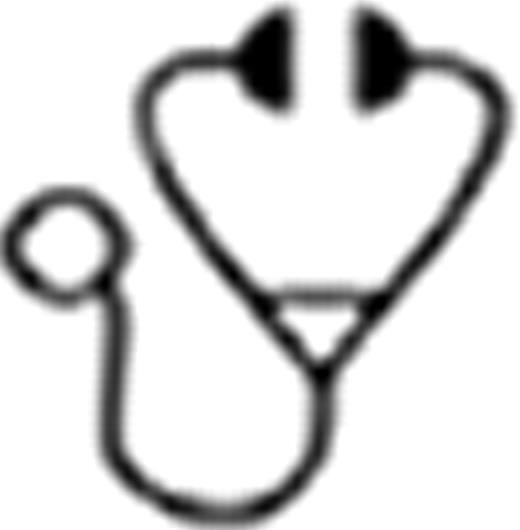Abstract
Several classifications based on cytogenetics have been proposed in AML. Typically 3 major categories for prognostication are defined: favorable, intermediate and unfavorable. The assignment to the unfavorable group shows minor differences between the different cytogenetic classifications currently used, however certain cytogenetic subgroups are assigned to the unfavorable subgroup concordantly: −5/5q−, 7q−/−7, −17/abn17p, inv(3)(q21q26)/t(3;3)(q21;q26) and complex karyotype (CK). With respect to CK 3 definitions are used: ≥3, ≥4 or ≥5 unrelated abnormalities. Recently, a so-called “monosomal karyotype” (MSK) defined as a karyotype showing “two or more distinct autosomal chromosome monosomies or one single autosomal monosomy in the presence of structural abnormalities” was introduced (Breems et al. JCO 2008). It was suggested that patients with MSK have a poor outcome being even inferior to CK. Aim: We here evaluated the prognostic power of differently defined cytogenetic subsets in order to identify the best definition for the prognostically most unfavorable subgroup. Patients: From our initial cohort of newly diagnosed AML (n=1,959) patients with t(15;17), t(8;21) or inv(16) (n=170) and AML with normal karyotype (n=965) were excluded. Thus, 824 patients with cytogenetic abnormalities remained for further investigation. Results: 428/824 (51.9%) patients showed an intermediate risk karyotype according to revised MRC criteria (MRC-I) (Grimwade et al. Blood 2010), while the remaining 396/824 (48.1%) cases belonged to the unfavorable MRC group (MRC-U). 162/824 cases (19.7%) fulfilled the criteria of MSK. According to MRC, 4 of these 162 cases with MSK were classified MRC-I while 158 were classified MRC-U. The overlap in classification between CK and MRC-U differed depending on the number of aberrations used to define CK. As such, the number of cases with CK was 272 (33.0%; MRC-I: 17, MRC-U: 255) using ≥3 clonal aberrations, and decreased to 222 (26.9%; all MRC-U) patients using ≥4 clonal aberrations or 196 (23.8%; all MRC-U) cases when applying the criterion of ≥5 clonal aberrations, respectively. Univariate Cox regression analysis revealed that unfavorable cytogenetics as defined by MRC-U, MSK, CK defined as ≥3, ≥4 or ≥5 unrelated abnormalities were all significantly associated with inferior OS as compared to the respective remaining intermediate group (for all p<0.001). Hazard ratios were 1.61, 1.93, 1.68, 1.94, and 1.92, respectively. Median OS in the respective categories was 8.5, 5.7, 6.3, 5.7, and 5.7 months, respectively. We then performed further analyses within the unfavorable risk group defined according to MRC and tested the impact of the 4 definitions for unfavorable subsets. In each comparison the median OS was significantly shorter for the subset with MSK, or CK defined as ≥3, '4 or ≥5 unrelated abnormalities as compared to the remaining MRC-U cases (5.7 vs 11.7 mo p=0.005; 6.3 vs 10.6 mo, p=0.031; 5.7 vs 11.0 mo, p=0.003; 5.7 vs 10.9 mo, p=0.006). Furthermore OS of patients within MRC-U excluding cases with MSK, or CK with ≥3, ≥4 or ≥5 unrelated abnormalities did not differ from patients with cytogenetic abnormalities assigned to MRC-I (median OS 11.7, 10.6, 11.0 and 10.9 mo, respectively vs 21.1 mo, p=0.072, p=0.16, p=0.28, and p=0.11, respectively). Within the MRC-U cohort only 124 cases fulfilled both criteria: MSK and CK≥4 (median OS 5.3 mo), 97 were CK≥4 only (median OS 6.3 mo) and 35 MSK only (median OS 6.7 mo). OS did not differ between these 3 subgroups but was significantly shorter for all comparisons to patients included in none of these subgroups (p<0.001, p=0.009, p=0.012, respectively). On the other hand OS of the 33 cases with 3 unrelated abnormalities did not differ from MRC-U cases with 1 or 2 abnormalities (18.9 vs 10.6, p=0.48). Conclusions: All definitions of very poor risk AML patients allow to identify a subset within MRC-U that shows significantly shorter OS than the remaining MRC-U cases. However, “complex karyotype defined as ≥4 unrelated abnormalities” is the best parameter as it identifies the largest proportion of very poor risk patients. Even more important, the application of the monosomal karyotype for prognostication and clinical guidance in AML misses 24.5% of the very poor risk patients identified based on CK ≥4. This may lead to suboptimal treatment decisions in this clinically proven very high risk patients.
Haferlach:MLL Munich Leukemia Laboratory: Employment, Equity Ownership. Alpermann:MLL Munich Leukemia Laboratory: Employment. Schnittger:MLL Munich Leukemia Laboratory: Employment, Equity Ownership. Kern:MLL Munich Leukemia Laboratory: Employment, Equity Ownership. Haferlach:MLL Munich Leukemia Laboratory: Employment, Equity Ownership.

This icon denotes a clinically relevant abstract
Author notes
Asterisk with author names denotes non-ASH members.

This feature is available to Subscribers Only
Sign In or Create an Account Close Modal